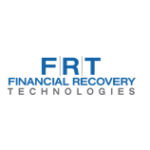New standards apply when assessing your service provider’s security and controls
For institutional investors, the ground rules for assessing the security, confidentiality, and processing integrity of their third-party service providers has fundamentally changed.
Most major financial institutions today work with numerous third-party service providers in the course of their day-to-day business. In many cases, this involves the exchange of sensitive information and requires the institution to ensure that its service providers have adequate controls in place to assure that security and confidentiality are maintained, and that any associated operational risks are mitigated appropriately. As the number of such service providers for the average institution now numbers in the dozens, most organizations must now rely on independent auditors (typically CPA firms) to assess and report on their service provider’s controls and processes.
In the past, financial institutions have looked to Statement on Auditing Standards No. 70 (“SAS 70”) reports as the primary standard for understanding their service provider’s controls. However, while the SAS 70 was a relevant means to assess the financial controls (and therefore the reliability of their service providers financial statements), many firms failed to realize that it was not appropriate to use or rely on those reports as a means to obtain assurance regarding their compliance and operations.
As a result, the American Institute of Certified Public Accountants (AICPA) has retired the SAS 70 standard and has issued a new, comprehensive set of Service Organization Control (SOC) reporting options (SOC 1, SOC 2 and SOC 3 reports). Organizations seeking to assess their service providers’ internal control over financial reporting will likely look for the SOC 1 report (which is performed in accordance with Statement on Standards for Attestation Engagements (SSAE) 16, arguably the closest analog to the original SAS 70).

Organizations looking to obtain an in-depth understanding of the controls in place at their service providers that relate to security, availability, confidentiality, and privacy will likely turn to the SOC 2 reporting option. For service providers that serve large audiences and seek to provide a general public statement, the SOC 3 will likely be the format of choice. As a securities class action settlement claim service provider, Financial Recovery Technologies (FRT) has been proactive in establishing the necessary controls, policies, and procedures to assure the security, confidentiality, and processing integrity necessary to meet the requirements of some of the world’s largest financial institutions. With the introduction of the new SOC reporting options, the organization has initiated the process of working with auditors to examine and report on these controls in utilizing the new SOC framework.
Contact us today to find out how FRT can deliver value to your firm by recovering incremental settlement dollars while simultaneously lowering the operational overhead of filing securities class action settlement claims.
For more information about service providers’ risk management control, read this report from the American Institute of Certified Public Accountants.





